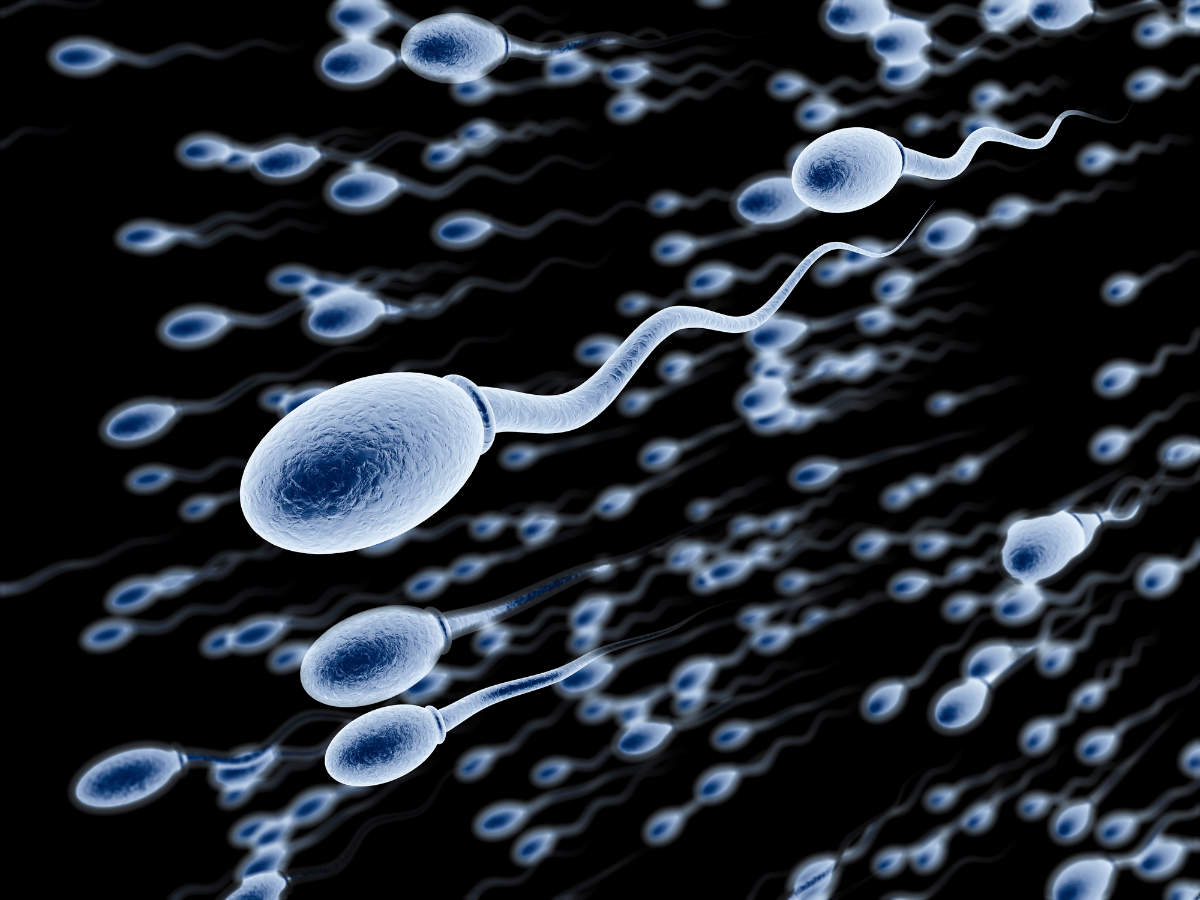Understanding Sperm Production
Before we delve into the question of how many sperm are present in one ejaculation, let's first understand the process of sperm production.

Sperm is constantly produced in the testes, a pair of reproductive organs found in the male reproductive system. The testes contain tiny coiled tubes called seminiferous tubules, where sperm cells are generated through a process called spermatogenesis.
Throughout spermatogenesis, millions of sperm cells are produced each day, ensuring a continuous supply for potential fertilization.
The Remarkable Journey to Ejaculation
When a man reaches climax during sexual intercourse or masturbation, a series of muscular contractions occur, leading to ejaculation.
On average, the entire process of ejaculation lasts around 10 seconds. During this brief moment, the muscles at the base of the penis contract forcefully, propelling the seminal fluid and sperm cells out through the urethra.
But just how many sperm cells are included in a typical ejaculation?
The Quantity and Composition of Ejaculate
The volume of ejaculate can vary from person to person and depends on various factors such as age, overall health, frequency of sexual activity, and time since the last ejaculation.
On average, a single ejaculation typically contains around 200-500 million sperm cells. These millions of sperm cells are combined with seminal fluid, which provides nourishment and protection to the sperm as they undertake their journey towards fertilization.
Fertility Rates and Sperm Count
It's important to note that the number of sperm in one ejaculation does not directly correlate with fertility rates. Several factors influence sperm quality, including morphology (shape), motility (movement), and concentration.
To increase the chances of fertilization, it is vital to have a suitable number of healthy sperm with good motility. A higher sperm count does not guarantee better fertility, as other factors like the presence of any underlying conditions or issues may impact the chances of conception.
In case of concerns about fertility or if you are struggling to conceive, it is advisable to consult a fertility specialist. They can conduct a comprehensive analysis, assessing various factors beyond the number of sperm in one ejaculation.
In Conclusion
While the average ejaculation contains 200-500 million sperm cells, focusing exclusively on quantity may not reflect the overall fertility potential. Factors like sperm motility and morphology play significant roles in determining fertility rates.
Understanding the complexities of sperm production, ejaculation, and fertility helps broaden our knowledge of reproductive health and encourages us to seek appropriate medical advice when necessary.
Related FAQs about how many sperm in one ejaculation
How many sperm are typically present in one ejaculation?
On average, a single ejaculation contains around 200-500 million sperm cells.
Does a higher sperm count ensure better fertility?
No, while a higher sperm count is beneficial, it does not guarantee better fertility. Factors such as sperm motility and morphology are also important determinants of fertility.
What is the role of seminal fluid in ejaculation?
Seminal fluid provides nourishment and protection to the sperm cells, aiding their journey towards fertilization.
Can the number of sperm in an ejaculation vary?
Yes, the volume of ejaculate can vary from person to person and is influenced by factors like age, overall health, frequency of sexual activity, and time since the last ejaculation.
Should I be concerned if my partner and I are struggling to conceive?
If you and your partner are experiencing difficulties in conceiving, it is advisable to consult a fertility specialist. They can conduct a comprehensive analysis to identify any underlying factors beyond the number of sperm in one ejaculation.
Glossary about how many sperm in one ejaculation
1. Seminiferous tubules: Seminiferous tubules are tiny coiled tubes found in the testes, responsible for the production of sperm cells in the male reproductive system.
2. Spermatogenesis: Spermatogenesis is the process through which sperm cells are generated in the seminiferous tubules of the testes.
3. Ejaculation: Ejaculation is the process by which seminal fluid, including sperm cells, is forcefully expelled through the penis during sexual climax.
4. Urethra: The urethra is the tube that connects the bladder to the external opening of the penis, through which urine and semen pass.
5. Sperm motility: Sperm motility refers to the movement and swimming ability of sperm cells, which is crucial for successful fertilization.
6. Sperm morphology: Sperm morphology refers to the size, shape, and structure of sperm cells. Abnormalities in morphology can affect fertility.
7. Fertility specialist: A fertility specialist is a medical professional who specializes in diagnosing and treating issues related to fertility and reproductive health.
8. Conception: Conception refers to the fertilization of an egg by a sperm, resulting in the formation of a viable pregnancy.
9. Reproductive health: Reproductive health encompasses the physical, emotional, and social well-being related to the reproductive system and its functions.
10. Medical advice: Medical advice refers to professional guidance and recommendations provided by healthcare experts based on individual health concerns.
